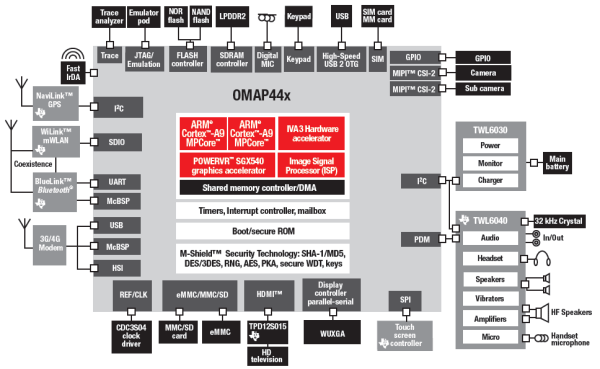Blackberry PlayBook tablet has OMAP4430: TI confirms at CES
by On Jan 21, 2011
The BlackBerry PlayBook is the first tablet with a TI OMAP 4 processor. The OMAP4430 internals are publicly documented here.
documented here.
Compared to the Apple iPad, the RIM BlackBerry PlayBook has a smaller 7 inch 1024×600 LCD screen and weighs less than one pound, both for better portability. There’s a really cool video on BlackBerry’s blog showing how fast the PlayBook tablet is compared to the iPad. What will be really interesting to see is how battery life compares while these devices are connected to the cellular networks.
Rumor has it that Sprint will be the first carrier to offer the BlackBerry PlayBook, starting in April. Beta versions of the PlayBook should be available for business customers in February. Some retailers are taking pre-orders now. I’ll buy one as soon as I can and report out.
In the meantime, be sure to check out the RIM BlackBerry PlayBook OMAP 4430 processor here.
